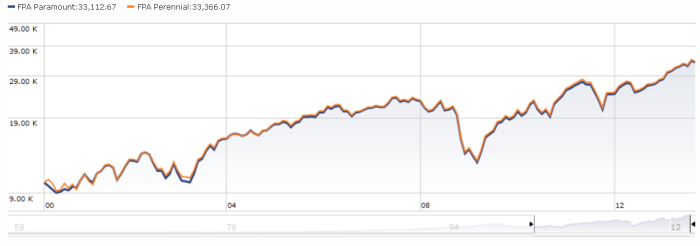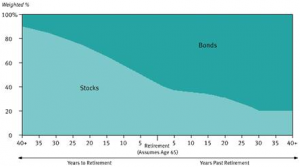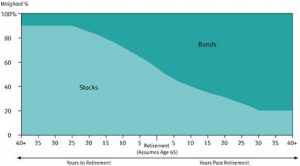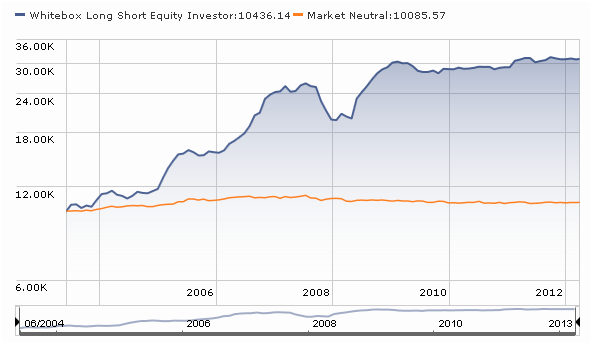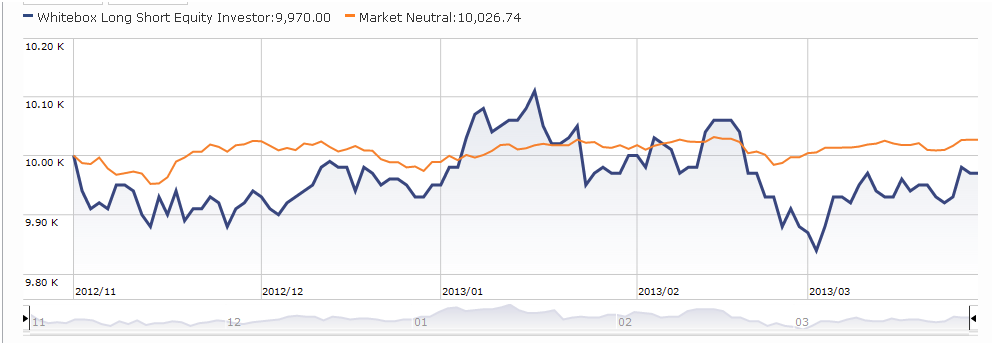AdvisorShares YieldPro ETF
AdvisorShares YieldPro ETF will be an actively-managed ETF that seeks to provide current income and capital appreciation primarily investing in both long and short positions in other ETFs that offer diversified exposure to income producing securities. They’ll mostly target securities that provide “competitive yield” but will add in “instruments which provide little or no yield for diversification or risk management purposes.” The fund will be managed by Joshua Emanuel, Chief Investment Officer of Elements Financial Group since 2010. Before that he was a Principal, Head of Strategy and co-chair of the Investment Management Committee at Wilshire Associates. The fund’s expense ratio has not yet been set.
American Century Emerging Markets Value Fund
American Century Emerging Markets Value Fund, Investor class shares, will pursue capital growth by investing in e.m. stocks. They target the 21 markets in the MSCI E.M. index. It’s a quant portfolio that starts by ranking stocks from most to least attractive based on value, momentum and quality. They then run a portfolio optimizer to balance risk and return. It will be managed by Vinod Chandrashekaran, Yulin Long, and Elizabeth Xie. All are members of the Quantitative Research team. The expense ratio will be capped at 1.46%. The minimum initial investment is $2,500. Launch is set for some time in October.
Brown Advisory Strategic European Equity Fund
Brown Advisory Strategic European Equity Fund, Investor shares, seeks to achieve total return by investing principally in equity securities issued by companies established or operating in Europe. They may invest directly or through a combination of derivatives. The fund will be managed by Dirk Enderlein of Wellington Management. Wellington is indisputably an “A-team” shop (they’ve got about three-quarters of a trillion in assets under management). Mr. Enderlein joined them in 2010 after serving as a manager for RCM – Allianz Global Investors in Frankfurt, Germany (1999-2009). Media reports described him as “one of Europe’s most highly regarded European growth managers.” The expense ratio will be capped at 1.35%. The minimum initial investment is $5,000. Launch is set for some time in October.
DoubleLine Shiller Enhanced CAPE
DoubleLine Shiller Enhanced CAPE, Class N shares, looks for “total return in excess of the Shiller Barclays CAPE® US Sector TR USD Index.” The Shiller CAPE (cyclically-adjusted price-earnings) index tracks the performance of the four (of ten) sectors which have the best combination of a low CAPE ratio and price momentum on their side. The fund will attempt to outdo the index by using leverage and by holding a fixed-income portfolio similar to DoubleLine Core Fixed Income’s. The fund will be managed by The Gundlach (given that he sees himself as super-heroic, an Enhanced Cape fits) and Jeffrey Sherman. The expense ratio will be capped at 0.80%. The minimum initial investment is $2,000. Launch is set for some time in October.
Driehaus Micro Cap Growth Fund
Driehaus Micro Cap Growth Fund (and, in truth, pretty much every Driehaus fund) seeks to maximize capital appreciation. They anticipate investing at least 80% in a non-diversified portfolio of micro-caps then then trading them actively; they anticipate a turnover of 100 – 275%. The managers will be Jeffrey James and Michael Buck. This is another instance of a limited partnership (or, in this case, two limited partnerships) being converted into mutual funds. Those were the Driehaus Micro Cap Fund, L.P. and the Driehaus Institutional Micro Cap Fund, L.P. Mr. James has been running the Micro Cap LP since 1998 and Mr. Buck has been assisting on that portfolio. The current draft of the prospectus does not include the LP’s track record. The expense ratio will be capped, but it has not yet been announced. The minimum initial investment is $10,000.
Even Keel Managed Risk Fund
Even Keel Managed Risk Fund will seek to provide total return consistent with long-term capital preservation, while seeking to manage volatility and reduce downside risk during severe, sustained market declines. It will be a hedged large cap equity portfolio. The managers will be Blake Graves and Zack Brown of Milliman Financial Risk Management LLC. The expense ratio will be capped at 0.97%. The minimum initial investment is $3,000.
Even Keel Opportunities Managed Risk Fund
Even Keel Opportunities Managed Risk Fund will seek to provide total return consistent with long-term capital preservation, while seeking to manage volatility and reduce downside risk during severe, sustained market declines. It will be a hedged SMID cap portfolio. The managers will be Blake Graves and Zack Brown of Milliman Financial Risk Management LLC. The expense ratio will be capped at 0.97%. The minimum initial investment is $3,000.
Even Keel Developed Markets Managed Risk Fund
Even Keel Developed Markets Managed Risk Fund will seek to provide total return consistent with long-term capital preservation, while seeking to manage volatility and reduce downside risk during severe, sustained market declines. It will be an international equity portfolio hedged with long/short exposure to index, Treasury and currency futures. The managers will be Blake Graves and Zack Brown of Milliman Financial Risk Management LLC. The expense ratio will be capped at 0.97%. The minimum initial investment is $3,000.
Even Keel Emerging Markets Managed Risk Fund
Even Keel Emerging Markets Managed Risk Fund will seek to provide total return consistent with long-term capital preservation, while seeking to manage volatility and reduce downside risk during severe, sustained market declines. It will be an emerging markets equity portfolio hedged with long/short exposure to index, Treasury and currency futures. . The managers will be Blake Graves and Zack Brown of Milliman Financial Risk Management LLC. The expense ratio will be capped at 0.97%. The minimum initial investment is $3,000.
Fidelity Short Duration High Income
Fidelity Short Duration High Income will pursue high current income and is willing to accept some capital appreciation. The prospectus is really kind of an ill-written jumble, they have an unnatural affinity for bullet-pointed lists. At base, they’ll invest mostly in BB or B-rated securities with a duration of three years or less but they might slip in defaulted securities, common stock and floating rate loans. It will be managed by Matthew Conti (lead portfolio manager) and Michael Plage. Mr. Conti also manages Fidelity Focused High Income (FHIFX) about which Morningstar is unimpressed, and bits of other bond funds. The expense ratio will be capped at 0.80%. The minimum initial investment is $2,500. Launch is set for some time in October.
Harbor Emerging Markets Equity Fund
Harbor Emerging Markets Equity Fund will seek long-term growth by investing at least 65% (?) of its portfolio in what the managers believe to be high-quality firms located in, or doing serious business in, the emerging markets. All Harbor funds are sub-advised. This one is managed by Frank Carroll and Tim Jensen of Oaktree Capital Management. Oaktree is a first-tier institutional manager which has agreed to sub-advise very few (uhh, two?) mutual funds. They have an emerging markets equity composite, representing their work for private clients, but the current prospectus does not reveal the composite’s age or performance. The fund is scheduled to go live on November 1. It would be prudent to check in then. The expense ratio will be capped at 1.62%. The minimum initial investment is $2,500.
Hull Tactical US ETF
Hull Tactical US ETF will be an actively-managed ETF that pursues long-term growth by playing with fire. It will invest in a combination of other ETFs that match the S&P, match the inverse of the S&P or are leveraged to returns of the S&P. The managers will position that fund somewhere between 200% long and 100% short, with the additional possibility of 100% cash. The fund will be managed by Blair Hull, Founder and Chairman of HTAA, and Brian von Dohlen, their Senior Financial Engineer. Expenses not yet set.
Manning & Napier Equity Income
Manning & Napier Equity Income, Class S shares, wants to provide “total return through a combination of current income, income growth, and long-term capital appreciation.” They’re going to target income-paying equity securities including common and preferred stocks, convertible securities, REITs, MLPs, ETFs and interests in business development companies. The fund will be managed by Michael J. Magiera, Managing Director of Equity Income Group, Christopher F. Petrosino, Managing Director of the Quantitative Strategies Group, Elizabeth Mallette and William Moore. The expense ratio will be capped, but it has not yet been announced. The minimum initial investment is $2,000.
Manning & Napier Emerging Opportunities
Manning & Napier Emerging Opportunities Series, Class S shares, will seek long-term growth by investing primarily in a domestic mid-cap growth portfolio. Their target is companies growing at least twice as fast as the overall economy. The fund will be managed by Ebrahim Busheri, Managing Director of Emerging Growth Group, Brian W. Lester and Ajay M. Sadarangani. The expense ratio will be capped, but it has not yet been announced. The minimum initial investment is $2,000.
Meridian Small Cap Growth
Meridian Small Cap Growth will pursue long-term growth of capital by investing primarily in equity securities of small capitalization companies. The bottom line is that this is the new platform for the two star managers, Chad Meade and Brian Schaub, who Meridian’s new owner hired away from Janus. Morningstar’s Greg Carlson described them as “superb managers” who were “consistently successful during their nearly seven years at the helm of this small-growth fund,” referring to Janus Triton. The expense ratio is not set. The minimum initial investment is $1,000.
Northern Multi-Manager Emerging Markets Debt Opportunity Fund
Northern Multi-Manager Emerging Markets Debt Opportunity Fund will seek both income and capital appreciation by investing in emerging and frontier market debt. That includes a wide variety of corporate and government bonds, preferred and convertible securities and derivatives. The sub-advisers include teams from a Northern Trust subsidiary, Bluebay Asset Management (a British firm with $56 billion in AUM) and Lazard. The expense ratio, after waivers, is capped at 0.93%. The prospectus covers only an institutional class, with a $1 million minimum.
PIMCO TRENDS Managed Futures Strategy Fund
PIMCO TRENDS Managed Futures Strategy Fund, “D” shares for retail, will seek “absolute risk-adjusted returns.” The plan is to invest in derivatives (and an unnamed off-shore fund run by PIMCO) linked to interest rates, currencies, mortgages, credit, commodities, equity indices and volatility-related instruments; they’ll invest in sectors trending higher and can short the ones trending lower. They plan on having a volatility target but haven’t yet announced it. In general, managed futures funds have been a raging disappointment (the group has losses over every trailing period from one day to five years). In general, PIMCO funds excel. It’ll be interested to see which precedent prevails. The manager is as-yet unnamed and the expense ratio is not set. The minimum initial investment is $2,500 for “D” shares purchased through a supermarket.
Redwood Managed Volatility Fund
Redwood Managed Volatility Fund, “N” class shares, will seek “a combination of total return and prudent management of portfolio downside volatility and downside loss.” The strategy is pretty distinctive: invest in high-yield bonds when the high-yield market is trending up and in short-term bonds whenever the high-yield market is trending down. The fund will be managed by Michael Messinger and Bruce DeLaurentis. Mr. Messinger seems to be a business/marketing guy while DeLaurentis is the investor. Mr. DeLaurentis’s separate accounts composite at Kensington Management, stretching back 20 years, seems fairly impressive. He’s returned about 10% over 20 years, 11% over 10 years, and 15% over five years. The expense ratio is not set. The minimum initial investment is $10,000.
Rx Fundamental Growth Fund
Rx Fundamental Growth Fund, Advisor shares, will seek capital appreciation by investing in stocks. The description is pretty generic. The highlight of this offering is their manager, Louis Navellier. Mr. Navellier is a famous growth-investing newsletter guy. He once had a line of mutual funds that merged with a couple Touchstone funds. The Touchstone fund Navellier subadvises is fairly mild-mannered though its performance in recent years has been weak. His separate account composites show mostly lackluster to abysmal performance over the past 7-10 years. The expense ratio is capped at 2.06%. The minimum initial investment is $250.
Steinberg Select Fund
Steinberg Select Fund, Investor class, will seek growth by investing in stocks of all sizes. It will likely invest in developed foreign stocks as well, but there’s not much of a discussion of asset class weighting. It seems like they’re looking for defensive names, but that’s not crystal clear. Michael Steinberg will head the investment team. Their all-cap concentrated value composite has a substantial lead over its benchmark since inception in 1990 and about a 150 bps annual lead in the past 10 years, but seems to have taken a dramatic dive in the 2007-09 crash. The expense ratio is capped at 1.0%. The minimum initial investment is $10,000.
Stone Toro Relative Value Fund
Stone Toro Relative Value Fund will seek capital appreciation with a secondary focus on current income. It invests in an all-cap portfolio, primarily of dividend-paying stock. Up to 40% might be invested in international stocks via ADRs. They warn that their strategy involves active and frequent trading. The manager will be Michael Jarzyna, Founding Partner and CIO of Stone Toro. The expense ratio is capped at 1.57%. The minimum initial investment is $1000.
T. Rowe Price Global Industrials Fund
T. Rowe Price Global Industrials Fund will pursue long-term capital growth by investing in a global, diversified portfolio of industrial sector stocks. The general rule seems to be, if it requires a large factory, it’s in. The fund will be managed by Peter Bates, an industrials analyst who joined Price in 2002 but who has no prior fund management record. The expense ratio is capped at 1.05%. The minimum initial investment is $2500, reduced to $1000 for IRAs.
Thomson Horstmann & Bryant Small Cap Value Fund
Thomson Horstmann & Bryant Small Cap Value Fund, Investor shares, is looking for capital appreciation. The plan is to invest in small-value stocks but there’s nothing in the prospectus that distinguishes their strategies from anyone else’s. The fund will be managed by Christopher N. Cuesta, who joined THB in 2002 and has managed micro-cap accounts for them since 2004 and small cap ones since 2005. He’d previously worked at Salomon Smith Barney and Van Eck. This private accounts composite shows persistently high beta, excellent upmarket performance and very weak downmarket performance. The expense ratio is capped at 1.5%. The minimum initial investment is $100.
WCM Focused Emerging Markets Fund
WCM Focused Emerging Markets Fund, Investor class, will seek long-term capital appreciation by investing in emerging and frontier markets stocks and corporate bonds. They can also invest in multinational corporations with large e.m. footprints. The fund will be non-diversified. Beyond being “bottom up” investors, details are a bit sketchy. The fund will be managed by a team from WCM Investment Management, led by Sanjay Ayer. Their emerging markets composite has a two year history. It appears to have substantially outperformed an e.m. equity index in 2011 and trailed it in 2012. The expense ratio is not yet set. The minimum initial investment is $1000.
WCM Focused Global Growth Fund
WCM Focused Global Growth Fund, Investor class, will seek long-term capital appreciation by investing in a non-diversified portfolio of global blue chip stocks. The fund will be managed by a team from WCM Investment Management, led by Sanjay Ayer. Their Quality Global Growth composite has a five year history. It appears to have substantially outperformed a global equity index over the past five years, though it trailed it in 2012. The expense ratio is not yet set. The minimum initial investment is $1000.
West Shore Real Asset Income Fund
West Shore Real Asset Income Fund, “N” class, will seek a combination of capital growth and current income. 30-50% will be in dividend-paying US equities, 30-50% in “foreign securities that the Adviser believes will provide returns that exceed the rate of inflation” and 20% in alternative investments, such as hedge funds. There’s no evidence (e.g., a track record) to suggest that this is a particularly good idea. The fund will be managed by Steve Cordasco, President of West Shore, Michael Shamosh, and James G. Rickards. The expense ratio is capped at 2.0%. The minimum initial investment is $2500.

